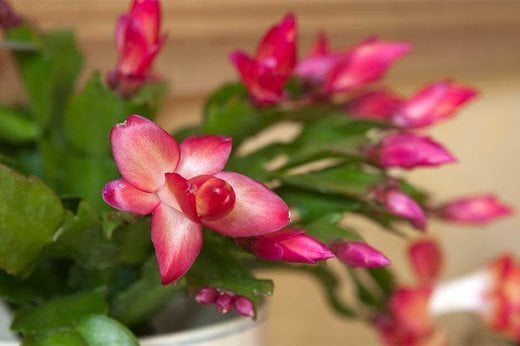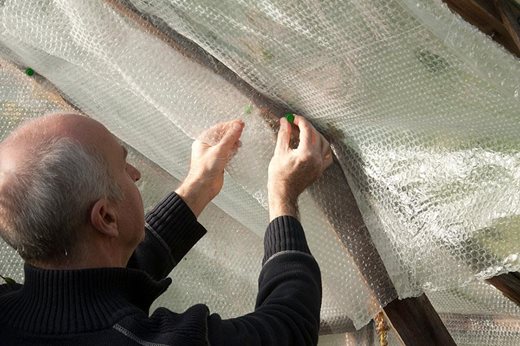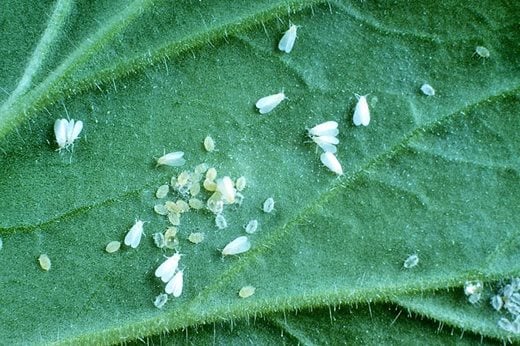Houseplants
 If your Christmas cactus (Schlumbergera truncata and S. x buckleyi) failed to set flower buds, it may be that the temperature is too high, more than 18°C (65°F), or that the plant is receiving light from an artificial light source after dark. Try moving the cactus into cooler conditions or away from night lighting.
If your Christmas cactus (Schlumbergera truncata and S. x buckleyi) failed to set flower buds, it may be that the temperature is too high, more than 18°C (65°F), or that the plant is receiving light from an artificial light source after dark. Try moving the cactus into cooler conditions or away from night lighting.
Remember that cacti need very little water, and no feeding, over the winter. Keep them barely moist until the spring, when they will be coming up to flowering and will therefore appreciate extra water and feed.
Clivia benefit similarly from a dormant period over winter, with less watering, feeding, and lower light levels.
Pot up Hippeastrum (amaryllis), and bring them back into active growth with regular watering and feeding. They should give you beautiful flowers for the new year.
Cyclamen persicum, which is often given as a winter pot plant, appreciates a cool room with good light. It is best watered from below (i.e. into the saucer, not the pot), as wetting the leaves can easily result in fungal infections and rotting off.
Keep potted indoor azaleas looking good for longer by keeping them in cool conditions and watering regularly. Remember to water azaleas with rainwater collected in a rain butt, not with tap water.
Avoid buying poinsettias that have been accidentally chilled, particularly those sold from street stalls on cold days. Once home, place them in a warm, light place, away from drafts, to ensure they last for as long as possible.
Place hyacinths in a cool, bright place in the home. If it is too warm, the leaves will elongate and the flowers will fade quickly.
General
Reduce watering and feeding of houseplants as the days shorten.
Check that light levels are sufficient for houseplants. They will need light to carry on over the winter, and can easily be forgotten in a back or spare room that receives little natural light, or with the curtains left drawn. They are best moved to sunny windowsill until March next year.
 In the greenhouse
In the greenhouse
Put up insulating material such as bubble wrap on the inside of the greenhouse, if not already done.
Ensure that there is adequate ventilation in the greenhouse or conservatory, perhaps opening vents for an hour or two on milder days to encourage air circulation.
Check that greenhouse heaters are functioning properly. Invest in a maximum-minimum thermometer to enable accurate monitoring of the temperature in your greenhouse.
Clear leaves and twigs from greenhouse and shed gutters.
Pests and disease watch
 Keep an eye out for overwintering pests such as whitefly or red spider mite and treat accordingly. Nooks and crannies, and the bark of woody houseplants and vines, can harbour mealybugs and scale insect nymphs, for example.
Keep an eye out for overwintering pests such as whitefly or red spider mite and treat accordingly. Nooks and crannies, and the bark of woody houseplants and vines, can harbour mealybugs and scale insect nymphs, for example.
Regularly deadhead winter-flowering plants in the home and greenhouse, to prevent problems with grey mould (Botrytis). Cyclamen are particularly prone to this problem.
Occasionally ventilating the greenhouse or conservatory for an hour or two on mild days will help reduce fungal infections.
This is a good time to clean all your old pots and seed trays, so that they are ready for next spring’s flurry of activity. Thorough cleaning will reduce pest and disease problems, and will reduce your propagation and sowing problems.
Use good hygiene by regularly picking and sweeping up fallen debris to prevent disease re-appearing and spreading.

